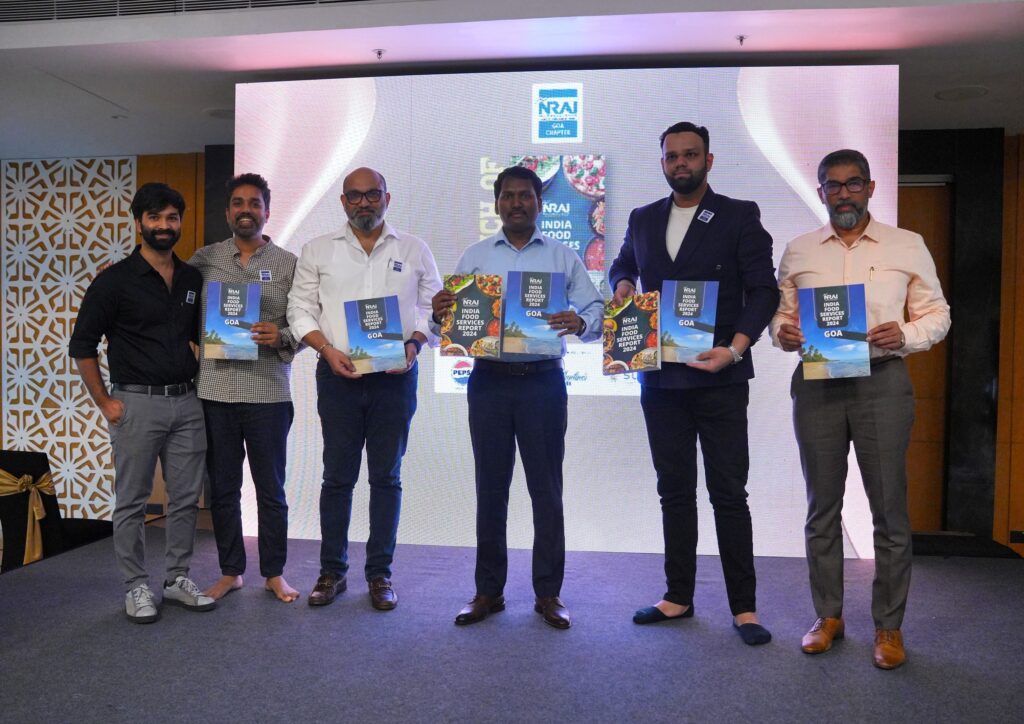
Goa’s booming restaurant sector is reshaping its tourism landscape, with a rising focus on high-end culinary experiences. Following the release of the India Food Services Report 2024 commissioned by the National Restaurant Association of India (NRAI) in July this year, Prahlad Sukhtankar, Goa chapter head of the Association, discusses the implications of this growth, the push for industry recognition and the enduring appeal of regional cuisine, highlighting how these factors can drive the state’s restaurant and tourism industries forward.
Responses to be attributed to Prahlad Sukhtankar, Goa chapter head of the National Restaurant Association of India (NRAI)
Q: How does Goa’s documented rise in stature as one of the country’s top 12 state’s with a booming restaurant segment, bode for the tourism industry in the state?
Prahlad Sukhtankar: Goa is striving to attract high-end tourism by appealing to high- spending tourists. Data shows that successful European tourist destinations, like Italy, Denmark and France, are renowned for their culinary experiences. People often think of these countries’ food first when planning their visits. Therefore, regions promoting high-end tourism must focus on gourmet and culinary tourism. The late Vincent Ramos of Taj highlighted that guests often choose hotels based on their proximity to well-known
restaurants. This underscores the importance of Goa’s growing restaurant industry in appealing to high-spending tourists.
Q: Do you see Goa’s organised food service market rising higher from the current 12th position — according to the NRAI report — pan India in the coming years? Could you cite reasons?
Prahlad Sukhtankar: Goa is highly favourable for organised business due to its high education and literacy levels, which are among the highest in the country. Currently, 50 percent of Goa’s 15,174 restaurants are in the organised sector, surpassing the nationalaverage of 43 percent, which is expected to reach 52 percent by 2028. Goans prefer legal business practices and are keen on mainstream business, with less rule-breaking compared to other states. As ease of doing business and access to funding improve, Goa is poised for faster growth in its organised sector than other regions.
Q: What are the top three demands that NRAI Goa has of the state government in terms of regulation, ensuring quality control and ease of doing business?
Prahlad Sukhtankar: Firstly, we urge the government to recognise the size of our industry. Pan India, we are twice the size of the hotel industry and 33 times the size of Bollywood. In Goa alone, our industry is worth ₹1,940 crore, growing at about eight percent per year. Despite our size, restaurants are classified as commercial establishments, unlike hotels, which have industry status. This classification results in higher costs and fewer benefits. The NRAI Goa seeks industry status to address these disparities and gain appropriate recognition and support. Secondly, we request a seat on the Goa Tourism Board, which is currently dominated by hotel owners. Restaurants form a significant part of the tourism industry and our representation is crucial. Thirdly, we need the government to improve ease of doing business. While licence renewals have become easier, obtaining new licences and permissions still needs significant improvement. On quality control, the government is doing a commendable job. The Food Safety and Standards Authority of India laws are uniform across the country, ensuring consistent standards. Their efforts to promote local grains and mandatory staff training are particularly noteworthy. This consistency helps businesses know and meet the required norms, whether in Delhi or Goa.

Q: What implications does the booming restaurant sector in Goa hold for the region’s native cuisines?
Prahlad Sukhtankar: Regional cuisine will always thrive. People may experiment with continental or Italian dishes, but they inevitably return to regional foods. The latest ‘India Food Services Report 2024’ shows Italian cuisine is currently the most popular, but when dining at home, people prefer Goan food. When hosting out-of-town guests, a Goan meal is a must. Therefore, Goan cuisine and restaurants serving it will always have a clientele. The busiest restaurants in Goa are those serving traditional Goan dishes. Even in my restaurant, while we offer a variety of continental dishes, they are inspired by Goan and regional
flavours, reflecting what every Indian inherently craves. Regional cuisine is an enduring favourite.
Q: In retrospect do you see the Covid pandemic as a springboard for the restaurant industry in the state? What are the reasons according to you?
Prahlad Sukhtankar: COVID taught us many valuable lessons on operating in a lean environment with limited resources and clientele. We learned how to better manage costs and maintain quality despite these constraints. These lessons proved beneficial in the long run. When the market reopened, we applied the same principles, which helped catapult us to 3X growth.
Q: How do you see the statistic in the NRAI report which reveals that family dinners account for most outings in Goa, otherwise known as the country’s party capital?
Prahlad Sukhtankar: Many view restaurants as mere venues for parties and events. However, in today’s fast-paced world, where families struggle to spend quality time together, it’s encouraging that 75 percent of diners choose restaurants for meaningful experiences. This highlights how the industry contributes to enhancing life experiences in Goa. Unlike past reports that focused on different purposes for dining out, this shows restaurants play a significant role in enriching people’s lives and fostering family connections, reflecting a positive impact on overall well-being.
Q: Why do you think Italian cuisine ranks at the top of Goa’s preference list?
Prahlad Sukhtankar: Inherently, people often prefer local cuisine as their palates are accustomed to it. However, when asked about dining preferences, many initially choose European options, with Italian cuisine being the most popular due to its familiarity. Spanish and French cuisines are less known in India, so Italian often tops the list. This reflects limited awareness of other cuisines rather than true preference. Incidentally, interest in regional Indian cuisine is soaring. People are increasingly asking for specific regional foods, such as South Goa or North Goa cuisine and even Hindu and Catholic Goan dishes. The surge in interest, especially in Kerala’s cuisine and regional specialties, suggests that as awareness grows, regional cuisines will become even more prominent in the future.
Q: Which international cuisines do you see making ground in the coming years?
Prahlad Sukhtankar: I think it is regional cuisine more than international cuisine because the interest in regionality has skyrocketed over the last year.
Q: How do you see the restaurant sector’s growth in Goa in the coming decade?
Prahlad Sukhtankar: Data indicates significant growth potential in India’s dining sector. Currently, Indians dine out or order food about 4.7 times per month, while in China, the average is 24 times. With India’s dining frequency expected to rise, the market offers immense opportunities. Entrepreneurs entering this industry can succeed by offering a high- quality product, maintaining consistent execution, managing costs effectively, and applying sound business practices. By following these principles, they can capture a substantial share of the expanding market, whether for dining in or out.


